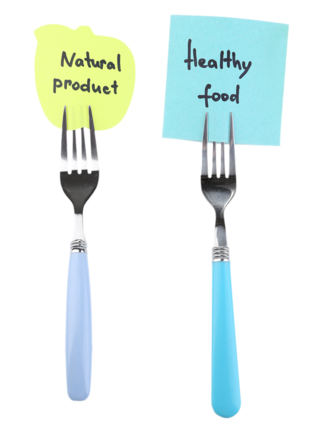by Neghar Fonooni
I know what you're thinking. How can something that's healthy possibly make me fat?
Food choice and quality, above all other aspects of nutrition, is the first thing I teach my clients; what you eat is far more important than the timing or the quantity of consumption—at least initially. We’ve got to get you off sandwiches for lunch and pasta for dinner, before we can even begin to talk about macronutrient ratios and carb cycling!
But at some point, quantity does matter. As Michael Pollan, author and real food advocate, famously penned:
"Eat food. Not too much. Mostly plants."
(I'd add to that "plenty of protein" but that's a discussion for another day.)
The truth is, just because it's "healthy" doesn't mean that it will promote optimal health. And perhaps even more relevant is this: over consumption of anything, no matter how healthy, is certainly not going to promote fat loss. Hell, it might even deter it. Binging on healthy food (or really binging and subsequently restricting in general) is not a habit that you want to cultivate, regardless of how harmless the food itself might seem.
So that leads me to the question, what is the healthy food that is actually making you fat?
Well, simply put, it's the one that you eat too much of. The one that you just can't stop eating. The one you eat in excess, all the while telling yourself the lie that it's totally okay because it's healthy. I mean, you’re not stuffing your face with French fries, so it’s an acceptable, right?
You know exactly what I'm talking about. For some, it's almond butter. For others it's protein bars, Kind bars, trail mix, gluten free cookie, or dates. I've gone through phases when I’d eat 4 kind bars in one day—FOUR! I’ve eaten my weight in dried mangos, and seen the bottom of one too many jars of chocolate hazelnut butter. I sabotaged my nutrition over and over again by becoming obsessed with otherwise harmless, healthy foods, and eating way too much of them.
The problem with foods like these twofold: First, there is the general lack of satiety, both in terms of mental and physical hunger. Foods like dried mangos and almond butter are calorically dense, meaning that one serving is actually quite small. You can easily eat the recommended serving without feeling full or satisfied. Add to that the fact that your craving for the food isn’t going to be quelled by just one bite, and you find yourself going back for more (and more, and more). Until before you know it, one handful of cranberry/almond/dark chocolate trail mix has turned into the entire bag.
But the second (and more pressing) issue with these foods is that we lie to ourselves. We tell ourselves that dried fruit is better than eating candy (and of course, it is), and trail mix is healthier than a bag of m&m’s. At which point, we erroneously give ourselves license to overindulge. We’ve given ourselves permission to eat more than we need. The larger force at work here isn’t the healthy food we’re eating; it’s the obsessive behavior that we’re cultivating.
Food, as I see it, is meant to be a pleasurable experience—not just during, but after as well. This means that no matter what you eat, whether it’s a chicken breast or a slice of cake, you want to be able to do so without feeling post-consumption guilt. The only way to do this is to get control over your eating habits, and get clear on your intentions.
If I’ve learned anything in my 14 years as a fitness and nutrition coach, it's that letting go of food-associated guilt is the most impactful thing you can do on your nutritional journey. Now that doesn't mean that you won't ever feel guilt–rather that you can acknowledge and then release it. Holding on to it is toxic and counter productive. Eating those healthy foods in excess doesn’t just add to your waist line, it weighs heavily on your heart.
Once you learn how to eat pleasurably and guilt free, you can make sound, informed, calculated decisions. You can eat foods that make you feel good during and after. You can eat to please your palate and your physique, and even have the occasional indulgence without feeling terrible about it afterwards. But, when you let go of guilt, you have to also accept responsibility. You have to own the choices you make, and accept the results. I know it sounds challenging and even impossible to eat guilt free and still lose fat, but through my Lean & Lovely transformation system, women all over the world have learned to redefine their relationships with food. All it takes are a few simple strategies, and A LOT of practice.
In this particular case, the transformation begins by identifying and owning your behavior then making sure that the food you’re having difficulty with isn’t readily available to you. Once you’ve done that, you’ll need to affirm that you aren’t actually deprived in any way, and lastly, you may want to reintroduce the food in moderation.
Identify the Behavior
This is always a difficult thing to do given that awareness is often confused with judgment. There’s no judgment here, only awareness. You aren’t bad because of the way you’ve eaten, and it doesn’t define you. It simply is. And you have the power to change it.
That awareness won’t always come easily, because as I said, we’re lying to ourselves about our behavior. It’s okay to eat 3 Quest bars in a row because they’re protein!But it isn't okay, because you can't stop–and not feeling in control of what you eat is really quite destructive for your overall well being, as well as your fat loss endeavors. If you can't refrain from consuming it, it's a trigger food. And no matter how "healthy" it is, trigger foods are just as detrimental as junk foods when it comes to not only your body composition, but more importantly, your mindset.
You've got to face it. You've got to say it out loud and affirm that this otherwise healthy substance is becoming a problem for you. Once you've identified and confronted the issue, you can begin the journey towards annihilating it.
Get it out of the damn house!
Once you have identified and acknowledged the trigger food, get it out of the house completely. Don't rely on willpower. Willpower isn’t an endless well that we can tap into as often as we like; in fact, countless studies have shown that willpower doesn’t work.
Don't allow your trigger food to taunt and tempt you from the walls of your kitchen. You'll end up berating yourself if you slip, subsequently judging and cursing yourself for not having more "willpower." Just get rid of it. Research (and common sense) shows that people are less likely to eat something if it's not as easily attainable.
Sometimes a family member might object to the eradication of your trigger food, creating additional obstacles. This is where you need to be resolute. Kindly appeal to their concern for you, and ask them to get on board–at least until you've overcome the trigger. You don't want to sabotage yourself, but you can't have loved ones sabotaging you either.
Affirmation and liberation
Once you've been separated from it, something pretty interesting will occur. You'll realize, with time, that you don't really need it. Am I any less happy without dried mangoes? Do I feel deprived? Is my diet lacking in delectable culinary concoctions? Absolutely not. Do I feel liberated from a food that was making me crazy, free from spiraling out of control? YES. Hell yes.
Sometimes all you need is time away to get a clear perspective. For me, life without a pound of dried mangos is a life worth living, because I'm no longer stuck in the "binge, regret, berate" cycle. Goodbye sabotaging health food! I'm the one in charge here, and you'll do well to remember it.
Reintroduction
Obviously you don't want to live the rest of your life in fear of any particular food. What kind of life would that be? My ultimate intention when it comes to nutrition is to feel completely free and unencumbered. I don't want to feel like any food controls me, or like anything is off limits–unless I want it to be. I want to feel good before, during, and after eating–no matter what.
That's where reintroduction comes in. Once you've completed the first few steps, bring the trigger food back in small quantities. Does it still trigger an all out binge? Back to step one. Can you have a small amount and feel satisfied? Congratulations, you're cured! No judgment, just awareness: Am I ready? Yes or no, that's it, without any guilt or feelings of failure attached to it. Before you know it, you’ll be experiencing a much more free and effortless relationship with food, and fat loss will be a natural side effect.
-by Neghar Fonooni
author of Lean & Lovely
Neghar's kettlebell fat loss program Lean and Lovely is currently on sale for 50% off!
I first met Neghar when we were both assisting at the RKC kettlebell certification in 2011. She's an awesome kettlebell instructor in person, and I think her Lean & Lovely program is even better. Each phase of the program has workouts, mindset, and nutrition goals. I'm a fan of (of course) the 3-phase, 12 week fat loss workouts with kettlebells, but I also love the extra "sweat sessions" and the nutrition handbook.
It's just a smart, effective workout and nutrition program.
-Josh
It's on sale now.



Leave a Reply